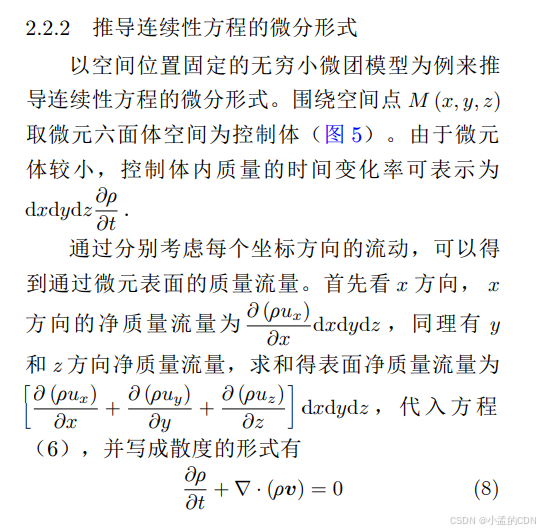内容介绍:
Pix2Pix是基于条件生成对抗网络(cGAN, Condition Generative Adversarial Networks )实现的一种深度学习图像转换模型,该模型是由Phillip Isola等作者在2017年CVPR上提出的,可以实现语义/标签到真实图片、灰度图到彩色图、航空图到地图、白天到黑夜、线稿图到实物图的转换。Pix2Pix是将cGAN应用于有监督的图像到图像翻译的经典之作,其包括两个模型:生成器和判别器。
传统上,尽管此类任务的目标都是相同的从像素预测像素,但每项都是用单独的专用机器来处理的。而Pix2Pix使用的网络作为一个通用框架,使用相同的架构和目标,只在不同的数据上进行训练,即可得到令人满意的结果,鉴于此许多人已经使用此网络发布了他们自己的艺术作品。
cGAN的生成器与传统GAN的生成器在原理上有一些区别,cGAN的生成器是将输入图片作为指导信息,由输入图像不断尝试生成用于迷惑判别器的“假”图像,由输入图像转换输出为相应“假”图像的本质是从像素到另一个像素的映射,而传统GAN的生成器是基于一个给定的随机噪声生成图像,输出图像通过其他约束条件控制生成,这是cGAN和GAN的在图像翻译任务中的差异。Pix2Pix中判别器的任务是判断从生成器输出的图像是真实的训练图像还是生成的“假”图像。在生成器与判别器的不断博弈过程中,模型会达到一个平衡点,生成器输出的图像与真实训练数据使得判别器刚好具有50%的概率判断正确。
具体内容:
1. 导包:
from download import download
from mindspore import dataset as ds
import matplotlib.pyplot as plt
import mindspore
import mindspore.nn as nn
import mindspore.ops as ops
import mindspore.nn as nn
import mindspore.nn as nn
from mindspore.common import initializer as init
import numpy as np
import os
import datetime
from mindspore import value_and_grad, Tensor
from mindspore import load_checkpoint, load_param_into_net
2. 下载数据集
url = "https://mindspore-website.obs.cn-north-4.myhuaweicloud.com/notebook/models/application/dataset_pix2pix.tar"
download(url, "./dataset", kind="tar", replace=True)3. 数据显示
dataset = ds.MindDataset("./dataset/dataset_pix2pix/train.mindrecord", columns_list=["input_images", "target_images"], shuffle=True)
data_iter = next(dataset.create_dict_iterator(output_numpy=True))
# 可视化部分训练数据
plt.figure(figsize=(10, 3), dpi=140)
for i, image in enumerate(data_iter['input_images'][:10], 1):
plt.subplot(3, 10, i)
plt.axis("off")
plt.imshow((image.transpose(1, 2, 0) + 1) / 2)
plt.show()4. 网络构建
class UNetSkipConnectionBlock(nn.Cell):
def __init__(self, outer_nc, inner_nc, in_planes=None, dropout=False,
submodule=None, outermost=False, innermost=False, alpha=0.2, norm_mode='batch'):
super(UNetSkipConnectionBlock, self).__init__()
down_norm = nn.BatchNorm2d(inner_nc)
up_norm = nn.BatchNorm2d(outer_nc)
use_bias = False
if norm_mode == 'instance':
down_norm = nn.BatchNorm2d(inner_nc, affine=False)
up_norm = nn.BatchNorm2d(outer_nc, affine=False)
use_bias = True
if in_planes is None:
in_planes = outer_nc
down_conv = nn.Conv2d(in_planes, inner_nc, kernel_size=4,
stride=2, padding=1, has_bias=use_bias, pad_mode='pad')
down_relu = nn.LeakyReLU(alpha)
up_relu = nn.ReLU()
if outermost:
up_conv = nn.Conv2dTranspose(inner_nc * 2, outer_nc,
kernel_size=4, stride=2,
padding=1, pad_mode='pad')
down = [down_conv]
up = [up_relu, up_conv, nn.Tanh()]
model = down + [submodule] + up
elif innermost:
up_conv = nn.Conv2dTranspose(inner_nc, outer_nc,
kernel_size=4, stride=2,
padding=1, has_bias=use_bias, pad_mode='pad')
down = [down_relu, down_conv]
up = [up_relu, up_conv, up_norm]
model = down + up
else:
up_conv = nn.Conv2dTranspose(inner_nc * 2, outer_nc,
kernel_size=4, stride=2,
padding=1, has_bias=use_bias, pad_mode='pad')
down = [down_relu, down_conv, down_norm]
up = [up_relu, up_conv, up_norm]
model = down + [submodule] + up
if dropout:
model.append(nn.Dropout(p=0.5))
self.model = nn.SequentialCell(model)
self.skip_connections = not outermost
def construct(self, x):
out = self.model(x)
if self.skip_connections:
out = ops.concat((out, x), axis=1)
return out5. UNet生成器
class UNetGenerator(nn.Cell):
def __init__(self, in_planes, out_planes, ngf=64, n_layers=8, norm_mode='bn', dropout=False):
super(UNetGenerator, self).__init__()
unet_block = UNetSkipConnectionBlock(ngf * 8, ngf * 8, in_planes=None, submodule=None,
norm_mode=norm_mode, innermost=True)
for _ in range(n_layers - 5):
unet_block = UNetSkipConnectionBlock(ngf * 8, ngf * 8, in_planes=None, submodule=unet_block,
norm_mode=norm_mode, dropout=dropout)
unet_block = UNetSkipConnectionBlock(ngf * 4, ngf * 8, in_planes=None, submodule=unet_block,
norm_mode=norm_mode)
unet_block = UNetSkipConnectionBlock(ngf * 2, ngf * 4, in_planes=None, submodule=unet_block,
norm_mode=norm_mode)
unet_block = UNetSkipConnectionBlock(ngf, ngf * 2, in_planes=None, submodule=unet_block,
norm_mode=norm_mode)
self.model = UNetSkipConnectionBlock(out_planes, ngf, in_planes=in_planes, submodule=unet_block,
outermost=True, norm_mode=norm_mode)
def construct(self, x):
return self.model(x)6. PatchGAN判别器
import mindspore.nn as nn
class ConvNormRelu(nn.Cell):
def __init__(self,
in_planes,
out_planes,
kernel_size=4,
stride=2,
alpha=0.2,
norm_mode='batch',
pad_mode='CONSTANT',
use_relu=True,
padding=None):
super(ConvNormRelu, self).__init__()
norm = nn.BatchNorm2d(out_planes)
if norm_mode == 'instance':
norm = nn.BatchNorm2d(out_planes, affine=False)
has_bias = (norm_mode == 'instance')
if not padding:
padding = (kernel_size - 1) // 2
if pad_mode == 'CONSTANT':
conv = nn.Conv2d(in_planes, out_planes, kernel_size, stride, pad_mode='pad',
has_bias=has_bias, padding=padding)
layers = [conv, norm]
else:
paddings = ((0, 0), (0, 0), (padding, padding), (padding, padding))
pad = nn.Pad(paddings=paddings, mode=pad_mode)
conv = nn.Conv2d(in_planes, out_planes, kernel_size, stride, pad_mode='pad', has_bias=has_bias)
layers = [pad, conv, norm]
if use_relu:
relu = nn.ReLU()
if alpha > 0:
relu = nn.LeakyReLU(alpha)
layers.append(relu)
self.features = nn.SequentialCell(layers)
def construct(self, x):
output = self.features(x)
return output
class Discriminator(nn.Cell):
def __init__(self, in_planes=3, ndf=64, n_layers=3, alpha=0.2, norm_mode='batch'):
super(Discriminator, self).__init__()
kernel_size = 4
layers = [
nn.Conv2d(in_planes, ndf, kernel_size, 2, pad_mode='pad', padding=1),
nn.LeakyReLU(alpha)
]
nf_mult = ndf
for i in range(1, n_layers):
nf_mult_prev = nf_mult
nf_mult = min(2 ** i, 8) * ndf
layers.append(ConvNormRelu(nf_mult_prev, nf_mult, kernel_size, 2, alpha, norm_mode, padding=1))
nf_mult_prev = nf_mult
nf_mult = min(2 ** n_layers, 8) * ndf
layers.append(ConvNormRelu(nf_mult_prev, nf_mult, kernel_size, 1, alpha, norm_mode, padding=1))
layers.append(nn.Conv2d(nf_mult, 1, kernel_size, 1, pad_mode='pad', padding=1))
self.features = nn.SequentialCell(layers)
def construct(self, x, y):
x_y = ops.concat((x, y), axis=1)
output = self.features(x_y)
return output7. Pix2Pix生成器和判别器初始化
g_in_planes = 3
g_out_planes = 3
g_ngf = 64
g_layers = 8
d_in_planes = 6
d_ndf = 64
d_layers = 3
alpha = 0.2
init_gain = 0.02
init_type = 'normal'
net_generator = UNetGenerator(in_planes=g_in_planes, out_planes=g_out_planes,
ngf=g_ngf, n_layers=g_layers)
for _, cell in net_generator.cells_and_names():
if isinstance(cell, (nn.Conv2d, nn.Conv2dTranspose)):
if init_type == 'normal':
cell.weight.set_data(init.initializer(init.Normal(init_gain), cell.weight.shape))
elif init_type == 'xavier':
cell.weight.set_data(init.initializer(init.XavierUniform(init_gain), cell.weight.shape))
elif init_type == 'constant':
cell.weight.set_data(init.initializer(0.001, cell.weight.shape))
else:
raise NotImplementedError('initialization method [%s] is not implemented' % init_type)
elif isinstance(cell, nn.BatchNorm2d):
cell.gamma.set_data(init.initializer('ones', cell.gamma.shape))
cell.beta.set_data(init.initializer('zeros', cell.beta.shape))
net_discriminator = Discriminator(in_planes=d_in_planes, ndf=d_ndf,
alpha=alpha, n_layers=d_layers)
for _, cell in net_discriminator.cells_and_names():
if isinstance(cell, (nn.Conv2d, nn.Conv2dTranspose)):
if init_type == 'normal':
cell.weight.set_data(init.initializer(init.Normal(init_gain), cell.weight.shape))
elif init_type == 'xavier':
cell.weight.set_data(init.initializer(init.XavierUniform(init_gain), cell.weight.shape))
elif init_type == 'constant':
cell.weight.set_data(init.initializer(0.001, cell.weight.shape))
else:
raise NotImplementedError('initialization method [%s] is not implemented' % init_type)
elif isinstance(cell, nn.BatchNorm2d):
cell.gamma.set_data(init.initializer('ones', cell.gamma.shape))
cell.beta.set_data(init.initializer('zeros', cell.beta.shape))
class Pix2Pix(nn.Cell):
"""Pix2Pix模型网络"""
def __init__(self, discriminator, generator):
super(Pix2Pix, self).__init__(auto_prefix=True)
self.net_discriminator = discriminator
self.net_generator = generator
def construct(self, reala):
fakeb = self.net_generator(reala)
return fakeb8. 训练
epoch_num = 3
ckpt_dir = "results/ckpt"
dataset_size = 400
val_pic_size = 256
lr = 0.0002
n_epochs = 100
n_epochs_decay = 100
def get_lr():
lrs = [lr] * dataset_size * n_epochs
lr_epoch = 0
for epoch in range(n_epochs_decay):
lr_epoch = lr * (n_epochs_decay - epoch) / n_epochs_decay
lrs += [lr_epoch] * dataset_size
lrs += [lr_epoch] * dataset_size * (epoch_num - n_epochs_decay - n_epochs)
return Tensor(np.array(lrs).astype(np.float32))
dataset = ds.MindDataset("./dataset/dataset_pix2pix/train.mindrecord", columns_list=["input_images", "target_images"], shuffle=True, num_parallel_workers=1)
steps_per_epoch = dataset.get_dataset_size()
loss_f = nn.BCEWithLogitsLoss()
l1_loss = nn.L1Loss()
def forword_dis(reala, realb):
lambda_dis = 0.5
fakeb = net_generator(reala)
pred0 = net_discriminator(reala, fakeb)
pred1 = net_discriminator(reala, realb)
loss_d = loss_f(pred1, ops.ones_like(pred1)) + loss_f(pred0, ops.zeros_like(pred0))
loss_dis = loss_d * lambda_dis
return loss_dis
def forword_gan(reala, realb):
lambda_gan = 0.5
lambda_l1 = 100
fakeb = net_generator(reala)
pred0 = net_discriminator(reala, fakeb)
loss_1 = loss_f(pred0, ops.ones_like(pred0))
loss_2 = l1_loss(fakeb, realb)
loss_gan = loss_1 * lambda_gan + loss_2 * lambda_l1
return loss_gan
d_opt = nn.Adam(net_discriminator.trainable_params(), learning_rate=get_lr(),
beta1=0.5, beta2=0.999, loss_scale=1)
g_opt = nn.Adam(net_generator.trainable_params(), learning_rate=get_lr(),
beta1=0.5, beta2=0.999, loss_scale=1)
grad_d = value_and_grad(forword_dis, None, net_discriminator.trainable_params())
grad_g = value_and_grad(forword_gan, None, net_generator.trainable_params())
def train_step(reala, realb):
loss_dis, d_grads = grad_d(reala, realb)
loss_gan, g_grads = grad_g(reala, realb)
d_opt(d_grads)
g_opt(g_grads)
return loss_dis, loss_gan
if not os.path.isdir(ckpt_dir):
os.makedirs(ckpt_dir)
g_losses = []
d_losses = []
data_loader = dataset.create_dict_iterator(output_numpy=True, num_epochs=epoch_num)
for epoch in range(epoch_num):
for i, data in enumerate(data_loader):
start_time = datetime.datetime.now()
input_image = Tensor(data["input_images"])
target_image = Tensor(data["target_images"])
dis_loss, gen_loss = train_step(input_image, target_image)
end_time = datetime.datetime.now()
delta = (end_time - start_time).microseconds
if i % 2 == 0:
print("ms per step:{:.2f} epoch:{}/{} step:{}/{} Dloss:{:.4f} Gloss:{:.4f} ".format((delta / 1000), (epoch + 1), (epoch_num), i, steps_per_epoch, float(dis_loss), float(gen_loss)))
d_losses.append(dis_loss.asnumpy())
g_losses.append(gen_loss.asnumpy())
if (epoch + 1) == epoch_num:
mindspore.save_checkpoint(net_generator, ckpt_dir + "Generator.ckpt")9. 推理
param_g = load_checkpoint(ckpt_dir + "Generator.ckpt")
load_param_into_net(net_generator, param_g)
dataset = ds.MindDataset("./dataset/dataset_pix2pix/train.mindrecord", columns_list=["input_images", "target_images"], shuffle=True)
data_iter = next(dataset.create_dict_iterator())
predict_show = net_generator(data_iter["input_images"])
plt.figure(figsize=(10, 3), dpi=140)
for i in range(10):
plt.subplot(2, 10, i + 1)
plt.imshow((data_iter["input_images"][i].asnumpy().transpose(1, 2, 0) + 1) / 2)
plt.axis("off")
plt.subplots_adjust(wspace=0.05, hspace=0.02)
plt.subplot(2, 10, i + 11)
plt.imshow((predict_show[i].asnumpy().transpose(1, 2, 0) + 1) / 2)
plt.axis("off")
plt.subplots_adjust(wspace=0.05, hspace=0.02)
plt.show()Pix2Pix的学习过程让我深刻体会到了深度学习在图像处理领域的强大能力。通过训练一对相互竞争的神经网络——生成器与判别器,Pix2Pix能够学习到输入图像与输出图像之间复杂的映射关系。这种端到端的学习方式,无需人工设计复杂的特征提取与转换规则,极大地简化了图像转换的流程,同时也提高了转换结果的质量和多样性。



















